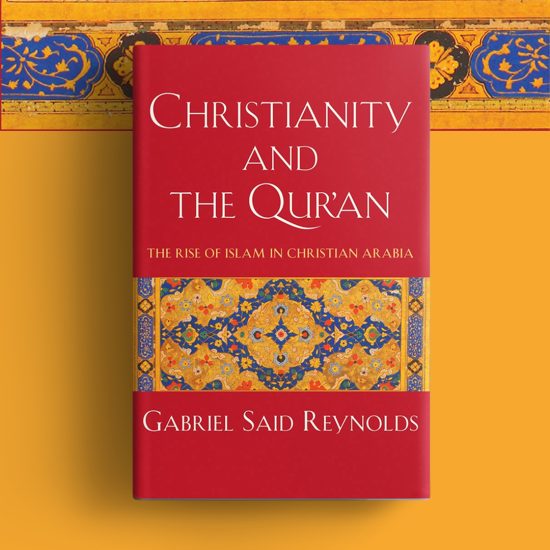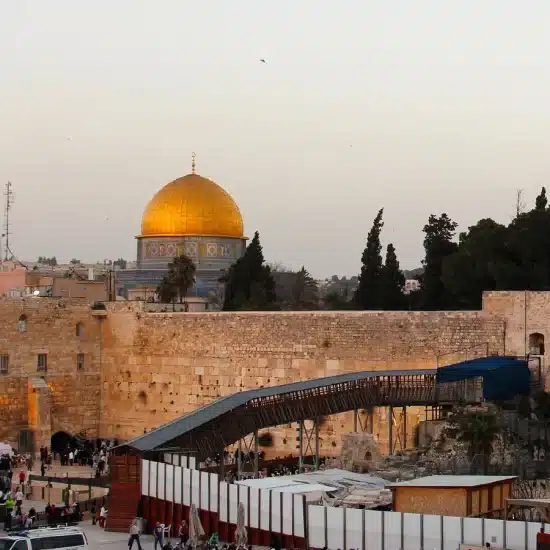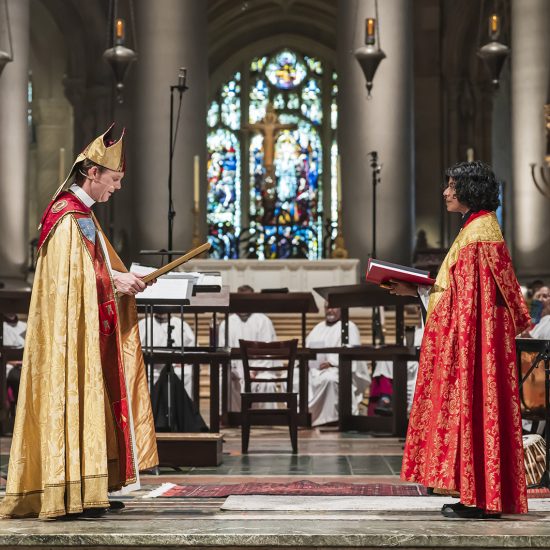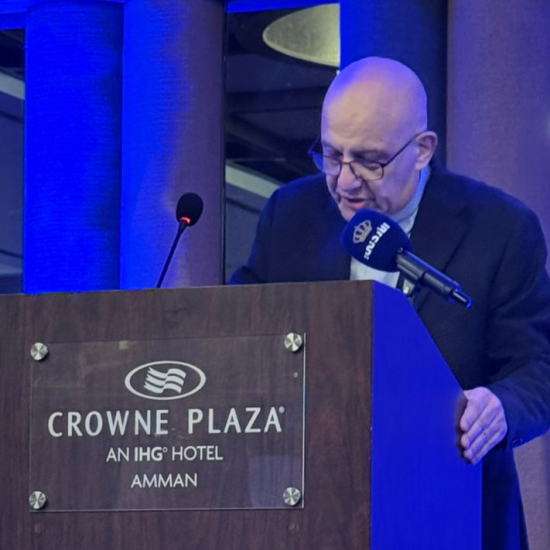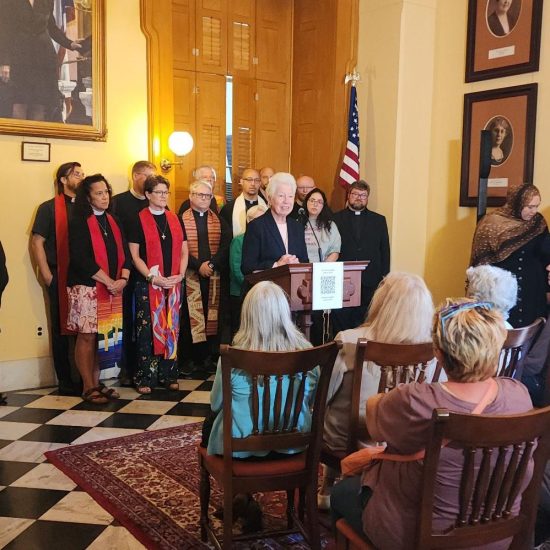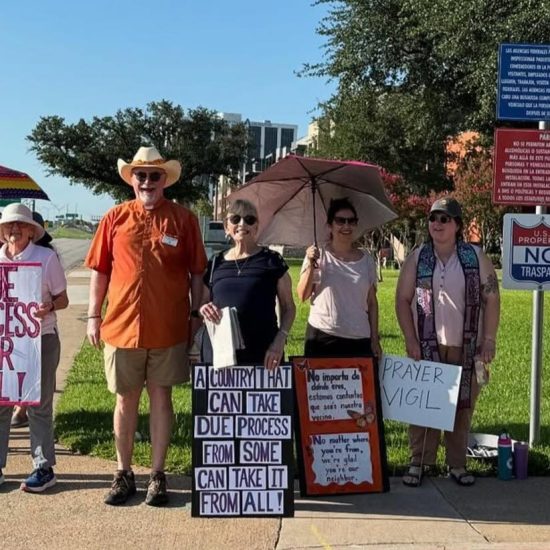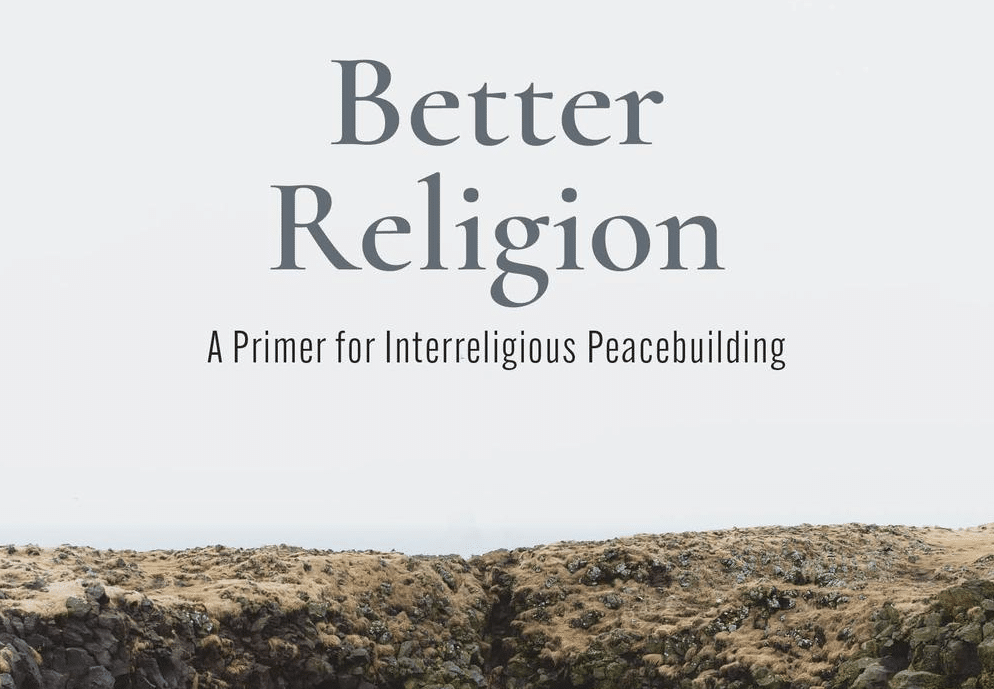
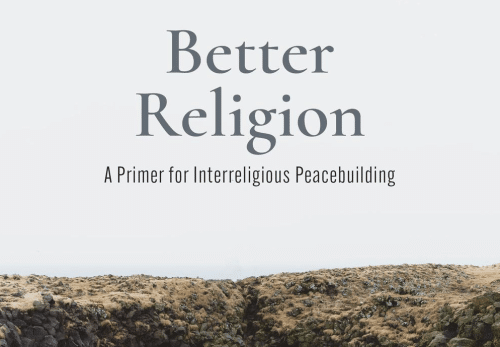
BETTER RELIGION: A Primer for Interreligious Peacebuilding. By John D. Barton. Waco, TX: Baylor University Press, 2022. Xiv + 226 pages.
It is often said by critics that religion fosters intolerance, bigotry, and violence. There is some truth to the accusations. Religion has been used and is being used to foster nationalism and provide cover for wars of aggression. Defenders of religion will respond by pointing out that religions have also fostered compassion and articulated calls for peace. The truth is, it’s something of a mixed bag. The Scriptures that I hold to be sacred can espouse both violence against enemies of God and the people as well as those who sin and call the people of God to love one’s neighbor and even one’s enemies. God seems to be the author of both emphases. It would seem that we who make up the religious communities have choices to make and many of those choices are rooted in theology. Since religions can be used to exclude and include, and engage in violence as well as compassion, how might people of different faith traditions overcome barriers designed to keep them separate to pursue peace on earth and goodwill without watering down their faith commitments? That is the question we who are faithful and devout have faced throughout history, but it has become even more acute today as our world becomes “smaller” and we are more likely to interact with people whose theologies and faith practices are different from our own.

Robert D. Cornwall
Those of us who are committed to finding pathways to peace often look for sources of wisdom that can guide us along this path. One of these sources of wisdom is John Barton’s book Better Religion: A Primer for Interreligious Peacebuilding. Barton brings to this question his own experiences as a missionary in Uganda and his teaching career both at Rochester University in Michigan and now at Pepperdine University in California. Barton currently serves as a Professor of Teaching in the Religion and Philosophy division at Pepperdine as well as serving as the director of the Pepperdine Center for Faith and Learning. Before going to Pepperdine, he served as the provost and professor of Philosophy at Rochester University. It is while he was at Rochester University that I got to know him. His interest in interreligious issues first developed during his tenure in Uganda and was further expanded during his time in Michigan, which has a very diverse religious population. That experience included his co-teaching with a Muslim scholar and another colleague in a course focusing on Muslim-Christian, which led to his to create the Pepperdine Center for Faith and Learning.
While Better Religion isn’t a lengthy book, I believe that it will prove to be an important one. That’s because in this book Barton provides the foundation for diagnosing the nature of religious differences and the potential for diverse religions to engage in peacebuilding. It should be understood that this is not an introduction to world religions. One would be well served to first read an introduction to world religions if one does not have a familiarity with the diversity of traditions. What Barton does here is offer us “a toolbox of resources for thinking about religion in the twenty-first century and imagining the prospects for peacebuilding across even the most challenging of religious differences” (p. xi).
This book is enriched by the many important relationships that Barton has developed through the years that cross religious lines. As a result of having these relationships, he has been able to participate in religious peacebuilding efforts. One thing he wants to convey here is that one need not give up or downplay one’s religious beliefs or values to engage in dialog and peacebuilding efforts. As a result, there is a lot of symmetry between what he is doing here and what Eboo Patel has been doing in his writing and community-building efforts. Barton draws on a wide assortment of resources to develop his vision, including the work of Miroslav Volf. What Barton wants to make clear is that religious disagreements need not be minimized or set aside for us to collaborate in building peace in the world. However, to get to that place where we can hold in proper tension both our religious commitments and our commitments to peace, we’ll need to define both the words religion and peace.
Barton divides Better Religion into two parts or sections. Part 1 offers “An Aerial View of Religion” in four chapters. Here he lays out what it means to move “Toward Religion’s ‘Better'” (chapter 1). Then he works on “Setting Coordinates for Hope” (chapter 2), followed by chapters that describe religion (chapter 3) and observe religion (chapter 4). This last chapter in part one focuses on global religious trends.
In Part 2 Barton examines “The Geography of Dissonance and Peace.” Whereas Part One offers an “aerial view” of the religious landscape, in part two, Barton takes a more localized view of the religious geography and its potential for interreligious peacebuilding. The focus here is not just on physical locations, but more importantly “the interactions between people, places, and ecosystems, and the meanings attached to those interactions” (p. 71). With that in mind, Barton offers us four chapters that focus on religious identity (chapter 5), religious agency (chapter 6), religious similarity (chapter 7), and “dissonance and peace” (chapter 8).
Returning to Part One of the book, Barton invites us to imagine ourselves on the International Space Station looking down at the earth. This is the aerial view he speaks of, and as such it offers a macro-level look at religion. He is seeking to lay out the broad patterns of human religious life while seeking to minimize essentialism.
In the first chapter of this section, Barton suggests that the fate of the world is linked to religious life and activity. He pushes back against the suggestion that religion is on the decline, arguing that the relevance of religion in the world is actually on the increase (ignoring this reality is to fail to recognize what is going on in the world). So, if our future as a world is impacted by religious forces, then we must work toward creating better religions that can provide the foundation for peace in this world. He points to the importance of religion in providing great numbers of humans with a sense of meaning and purpose. Having laid out the reasons why he believes religion provides a foundation for meaning and purpose, Barton turns in chapter 2 to setting “coordinates for hope.” In many ways what Barton does here is aspirational. As such, he confesses that he’s not optimistic about the project’s success due to the steady stream of bad news when it comes to religion. Nevertheless, he has hope that the project succeeds. He wants us to know that there is a difference between belief and hope, for hope is rooted in the promises of God. Barton sees these promises as providing an invitation to participate in peacemaking efforts.
One of the elements Barton draws on is here the contrast between thin religion, which allows itself to be hijacked by ingroup agendas, and thick religion, which offers “expansive moral visions that transcend in-group politics, and it provides powerful motivations and resources for intergroup peacemaking, genuine kindness, and concern for strangers and even enemies.” (p. 31). He believes that the thick form of our various religions provides overlapping elements that lay the foundation for peacebuilding. With this distinction between belief and hope in mind, how should we define religion? He seeks to answer that question in chapter three, where he provides definitions, so we know what we’re talking about going forward. In this chapter, he not only defines religion but also peace. To this point, John has laid out the foundations for what is to come. Then in chapter 4, where he offers further observations on religion, focusing on the statistics and demographics of religion. Here he highlights the complexity of religion, including noting where it’s growing and declining. Perhaps, as he suggests the reality here is not that religion is declining, but that religious consensus is declining, such that we’re seeing a cacophony of new beliefs and practices and communities.
In part 2, Barton looks at what he calls the “Geography of Dissonance and Peace.” As we noted earlier, here Barton focuses on not only locations but also interactions between people, places, and ecosystems, along with the “meanings attached to those interactions.” What he offers here is a series of “conceptual maps” using analogies between physical and conceptual landscapes. He begins this section in chapter 5, which is titled “Silos, Sheilas, and Sets,” laying out ways of understanding religious identity. When he speaks of religious silos, he is referring to the tendency to focus on individual religious systems in isolation from other religious systems. Some of this is natural in that we distinguish religious communities from each other. Thus, we can speak in terms of world religions, especially the big five (Hinduism, Buddhism, Judaism, Christianity, and Islam). When we begin this process, however, where do we stop? We might ask about all the others such as Sikhism, Jainism, and many others. Sociologists have also begun to speak of what has come to be called the Sheila model of religion. Robert Bellah introduced this model by using the way one person, whom he calls Sheila, spoke of her cafeteria-style religion as Sheilaism. I think many of us have encountered people who have embraced radical individualism when it comes to religion. Barton suggests that we might find a more suitable model of religious life in the anthropological concept of centered sets to identify religious families. Barton makes use of the work of former Fuller Seminary professor and missionary Paul Hiebert’s work by speaking of three kinds of sets—bounded, fuzzy, and centered—to organize religious identity. In reality, all three models have value in understanding how religion functions in our world, but the idea of religious sets does seem to have value for what Barton wants to accomplish.
After looking at the question of religious identity in chapter five, which I must say is an important chapter, we move to chapter six, where Barton speaks of religious agency in terms of “Magnets, Markets, and Fields.” Here he focuses on how religious identities are formed and the roles they play in social conditioning and personal agency. The idea here is that religions serve as magnets, drawing people together, and as marketplaces (here he speaks of the connection of religious consumers to religious goods, as well as suppliers). As for the religious fields, these are spaces that religions inhabit, and as such religions have distinctive jargon, rules, and practices. Having laid out ways in which religious agency functions, Barton addresses the relationship of religious similarities to collaboration. If we are to collaborate across religious lines, even if our religions are quite different, we will want to know if and where there is overlap so that conversation can take place. But what is the nature of that similarity? One answer to that question is known as perennialism. This is a view of religious similarity that assumes that despite differences in form, all religions spring from the same spiritual essence. That vision is often spoken of in terms of there being “many paths, one mountain.” In other words, since religions are all going toward the same goal, though from different starting points, we can look to the goal as the place of overlap. To do this, participants in such collaboration will want to separate the essentials from the nonessentials. The problem is, it’s the “nonessentials that make a religious tradition distinctive.” So, can we truly separate out the essentials and let go of the nonessentials without undermining the religious traditions we inhabit? In other words, must we set aside our distinctives if we’re going to cooperate and build peace? Barton offers a helpful critique of that vision, while at the same time acknowledging the possibility that there are universals that are present in most of our religious traditions that can provide the foundation for cooperation. One of those similarities is found in the prevalence of something akin to the Golden Rule. That rule is a key element in our efforts of working together toward peace.
Finally, we come to chapter eight, which Barton titles “Bubbles, Bombs, and Bridges.” In this chapter, Barton brings to a close the conversation about the reality of religious dissonance and the possibility of collaboration toward creating peace in the world. In this chapter, Barton draws together his thoughts on what divides and what unites us when it comes to religion. It’s important to remember, as Barton reminds us, what unites us isn’t always good and what divides us isn’t always bad. That is, humans tend to unite around very bad things. Consider the defenses of slavery by Christian theologians in the nineteenth century (unfortunately, even today there are theologians, wishing to defend biblical inerrancy, that defend slavery). Political movements can unite for good or for bad purposes, and the same is true of religions. We see this present in different forms of religious nationalism. In this chapter, Barton wants to provide a practical set of tools that will allow us to pursue collaboration. Thus, he provides us with several diagnostic models so that we can look at how religions address human questions. One of those models is to speak of organizing religions into sets using the image of mountain ranges. With this in mind, we might speak of three mountain ranges (families): Indian Religions, Abrahamic religions, and Primary religions. We might even add to this conversation a naturalistic/secularist range. Thus, instead of religious silos, we can envision sets of religious families that share similar roots and understandings. Thus, the Indian mountain range would include Hinduism, Jainism, Buddhism, and possibly Sikhism (though it also has connections to the Abrahamic religions). The Abrahamic family would include Christianity, Judaism, and Islam, as well as perhaps Bahai. Primary religions might include Native American or African spiritual traditions. Here again, he brings into the conversation the Golden Rule as a way of organizing the conversation toward peacebuilding.
As I noted at the top, I believe this is an important resource for those of us who seek to build relationships across religious lines. Living in our silos is not helpful in an increasingly pluralistic world. As one who has been actively involved in interfaith work and who counts among my closest friends members of very different faith communities from Islam to Hinduism, I believe that Barton’s book Better Religion will serve not only as a primer but the foundation for important conversations that can lead to more collaboration in the pursuit of peace. Once again Barton doesn’t provide us with a book that covers every element of the process in complete detail. It’s not a how-to manual, but it points us in the right direction. It provides a set of tools that can help us move toward a greater understanding of one another and cooperation with one another without jettisoning the distinctives of our faith traditions. I want to close this review by returning to Barton’s distinction between optimism and hope. I think that this is an important distinction because right now there is not a lot of cause for optimism, but that doesn’t mean there is no room for hope. If we are to see this hope fulfilled, we’ll need to let go of thin religion that allows itself to be hijacked and embrace thick religion that “leverages their own distinct resources for interreligious peace. It needs religious activism that builds bridges across chasms of difference and mobilizes human capacities for compassionate empathy and altruistic love” (p. 36). This is the key to the hope that is rooted in a Better Religion. John Barton offers us in this book a primer that will help us get to that place.
This review originally appeared on BobCornwall.com.
Robert D. Cornwall is an ordained minister in the Christian Church (Disciples of Christ). Now retired from his ministry at Central Woodward Christian Church (Disciples of Christ) of Troy, Michigan, he serves as Minister-at-Large in Troy. He holds a Ph.D. in Historical Theology from Fuller Theological Seminary and is the author of numerous books including his latest books: Called to Bless: Finding Hope by Reclaiming Our Spiritual Roots (Cascade Books, 2021) and Unfettered Spirit: Spiritual Gifts for the New Great Awakening, 2nd Edition, (Energion Publications, 2021). His blog Ponderings on a Faith Journey can be found at www.bobcornwall.com.

